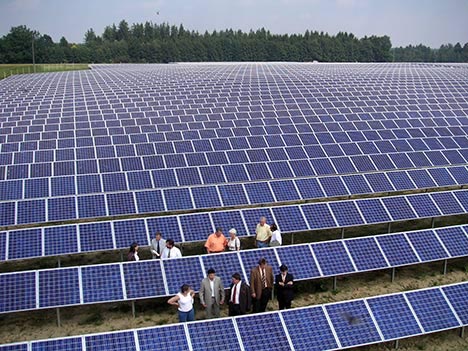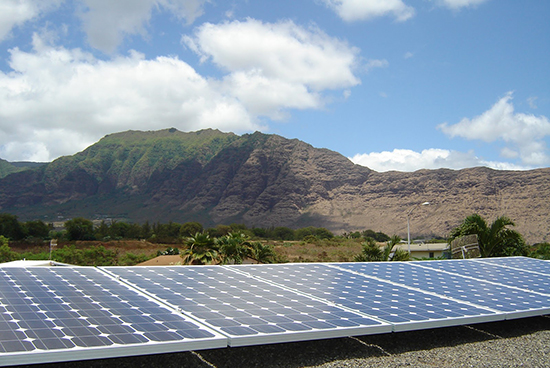
Hawaii has seen an ever larger increase in solar electricity production from solar farms and residents. Hawaii electricity comes from its imports of diesel, low sulfur fuel oil (LSFO), and naphtha, but with government incentives, increased awareness of limited fossil fuels, and the abundant amount of sun energy on the Pacific, more and more solar panels are going up. In Hawaii, the cost of oil dependency was $61 per month in 2011 and the cost of more solar was 30 cents per month.
The number of solar power systems across the island state has doubled every year since 2007, with nearly 20,000 units installed. Now Hawaii is producing nearly 140 megawatts of their own power, which equates to the capacity of a power plant. The amount of tax breaks being shelled out to solar purchasers is having a significant impact on the state's budget, and legislators in Hawaii are struggling to handle it. Solar tax credits cost the state $173.8 million this year in foregone revenue, up from $34.7 million in 2010.
Residents are reporting that the state is not only delaying permits for solar installations by as much as a year or more, but Hawaiian Electric Co. on Oahu, which oversees subsidiary utilities, is initiating expensive "interconnection" studies, which the residents must bear the financial burden. The studies are explained as to find out the impact the sudden increase the solar technology on a large scale will have on the current electrical grid.A moratorium on solar installations sparked outrage with residents and eventually was quickly withdrawn.

Two problems have arisen with utility companies in accepting large scale solar production. First of all, traditional power was controlled by power plants that used fossil fuels by feeding more or less power based on demands. Now, they must consider dealing with "unfirm power", meaning that the excess power being pumped into the grid has no place to go when demand is decreased. The fear is that surges can kill the electrical grid, destroy computers and electronics in homes and businesses, and cause roaming blackouts.
The second concern is that there will be considerable fluctuations is power when cloudy days ensue. This compounds the problem for the utilities to adjust power for the state on a grid system that is inadequate to deal with these fluctuations. Power produced from the entirety of Hawaii is impossible to distribute, as they grids are separate for each individual island. The lack of conductivity between them keeps solar surges local. At this point, the concept of energy independence not only seems counterintuitve, but is also being suppressed.

It remains vital to find ways to store the massive amount of excess electricity sun and wind produce for the own times when it dark and the air is still. Some of the methods in use today around the world are huge batteries, converting electricity to liquid air, and in-home storage. Improving battery technology could be an approach, but a 1,300 metric ton battery larger than a football field can only provide enough electricity for about 12,000 residents for seven minutes. It would take hundreds of units to store electricity from solar and wind to equal the power generated by one coal plant.
Until Hawaii resolves the grid dilemma, The PUC (Public Utilities Commission) has approved Hawaiian Electric's request to use a $5.3 million federal stimulus grant to install smart grid technology to portions of the electric system in cities around Hawaii. Perhaps the glut of renewable energy might spark an overall increase in electric cars in Hawaii, thereby plunging the community further in green technologies.





